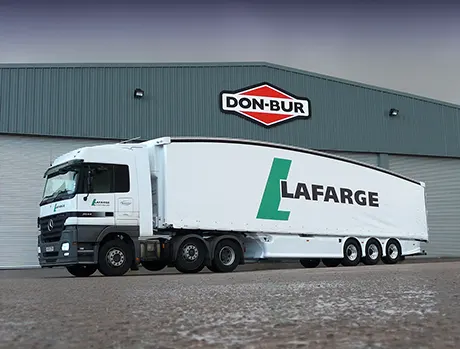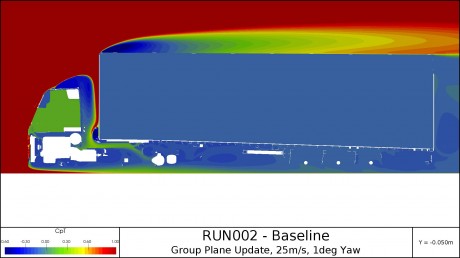For commercial vehicles, the debate of weight vs. aerodynamics has been rumbling on now for some years and it is a subject worth understanding if you’re to get the most value from your fleet specification. Even at today’s low diesel prices, getting it right can generate significant savings in fuel costs but getting it wrong can mean a worthless investment.
Critically, there are two distinct considerations any Fleet Engineer should make. Firstly, what payload do you expect to be carrying and secondly, what is the average speed of the vehicle? The results from this simple research will determine whether your vehicle will be most affected by either momentum or relative wind speed.
Firstly, let’s address the subject of weight. Most engineers will understand the implications of momentum and inertia when it comes to mass and when referring to HGV’s, we’re not talking about a few hundred kilograms. Make no mistake, every time the driver puts his right foot down on the accelerator of a 44 tonne combination, overcoming inertia will easily represent the largest chunk of consumed fuel. Having reached a comfortable cruising speed with a healthy momentum, any braking would subsequently burn all that stored energy in wasted heat and the engine has to start over again.
Weight therefore would seem an important factor; however, the issue of weight saving can be misunderstood. It is possible to get a trailer tare weight down to below 6 tonnes but this impressive weight reduction, relative to the overall total laden weight, is fairly small. As an example, engineering 1 tonne of weight out of your 44T tri-axle trailer specification represents 2.3% of the total mass. It doesn’t take a rocket scientist to calculate that this reduction just isn’t going to have much of an effect.
However, a 1 tonne tare weight reduction may offer you a unique opportunity to add more payload. This won’t directly affect your overall weight and fuel consumption, but it will reduce the number of trips required to transport the same load; indirectly saving quite a high percentage in fuel.
On a smaller scale, you have to consider the effect of a 500kgs weight saving achieved on a 7.5 tonne rigid. When you understand that weight is more critical when stopping and starting, this relatively large weight reduction will have a far greater effect on fuel economy for a strictly urban vehicle than any aerodynamic widget you can stick on it.
Now we turn our attention to the subject of aerodynamics. As your vehicle approaches anything over 40mph, air resistance starts to become a far more significant gas guzzler. In fact, at 56mph, approximately half of fuel burned is directly attributable to aerodynamic drag.
As food for thought, an aerodynamic trailer with a humble average fuel saving of just 5% will save £1,466 per annum in diesel; a figure which can’t be ignored. Under the same circumstances, a Teardrop trailer with the in-operation average fuel saving of 11.3% will reduce fuel consumed by over £3,000 per annum†.
These two key factors then should drive the decisions you make about how to reduce fuel consumption. Trunking trailers that spend much of their time running between 40 and 56mph will benefit hugely from aerodynamic interventions whilst urban trailers on strictly stop-start cycles with multiple drop-offs are unlikely to reach high enough speeds where aerodynamics will have any effect at all.
Then, there’s another subject not touched on yet; cube and double decks. A ‘Blade’ panel Lifting Deck trailer can have a tare weight of 13 tonnes or more. The benefit though is a full 52 mid-weight UK pallets; enough to cut delivery frequency in half which, in turn, almost halves your fuel cost.
All in all, it’s horses for courses. Aerodynamics plays a huge part with trunking trailers whereas weight becomes a more important consideration for secondary distribution rigid vehicles. Whatever your particular circumstances, Don-Bur can offer, and advise on, a variety of pragmatic and cost-effective solutions.
† Based on 80,000 miles per year and a bulk diesel price of 76.21ppl.


Above left: The best of both worlds - Teardrop trailer engineered down to just 5,820kgs for greater payload potential and incorporating full-wrap side skirting and aerodynamic front dome for optimum aerodynamic efficiency.
Above right: A max-cube Longer Semi Trailer with a tare weight of 14.9 tonnes capable of carrying 60 UK pallets
We’d love to hear from you – get in touch today!






